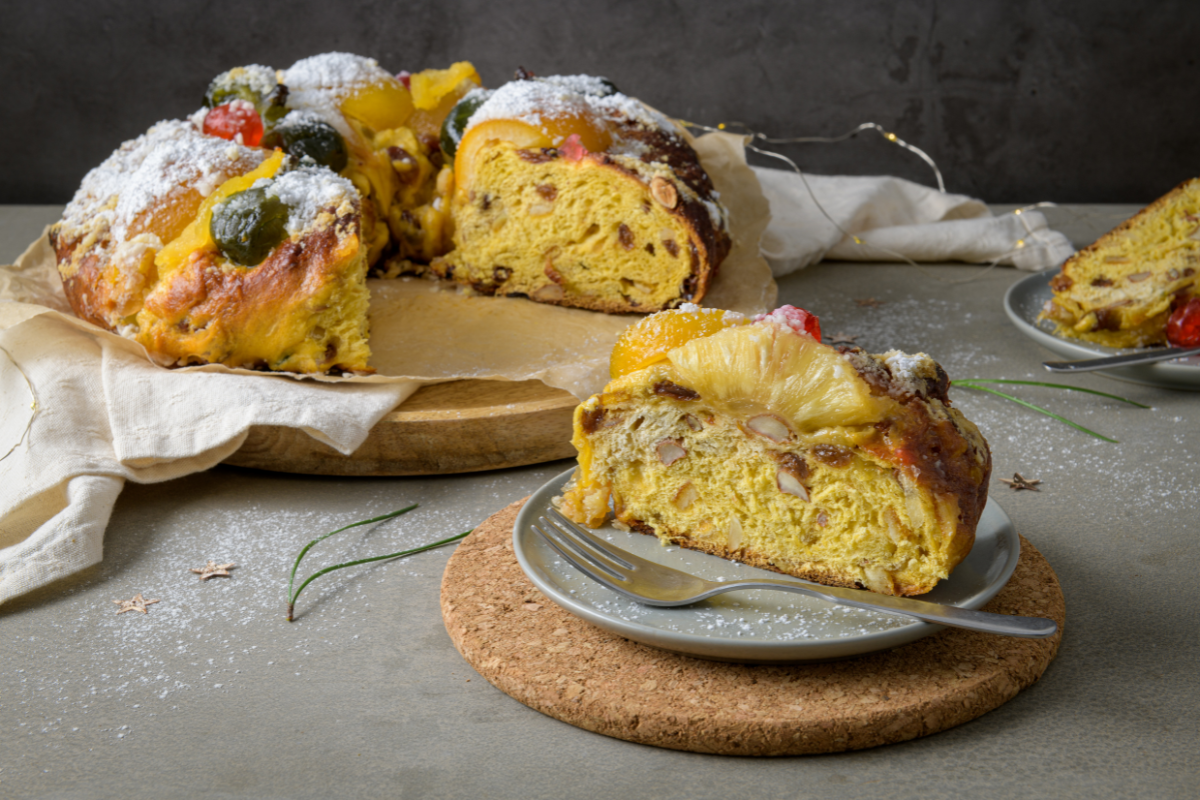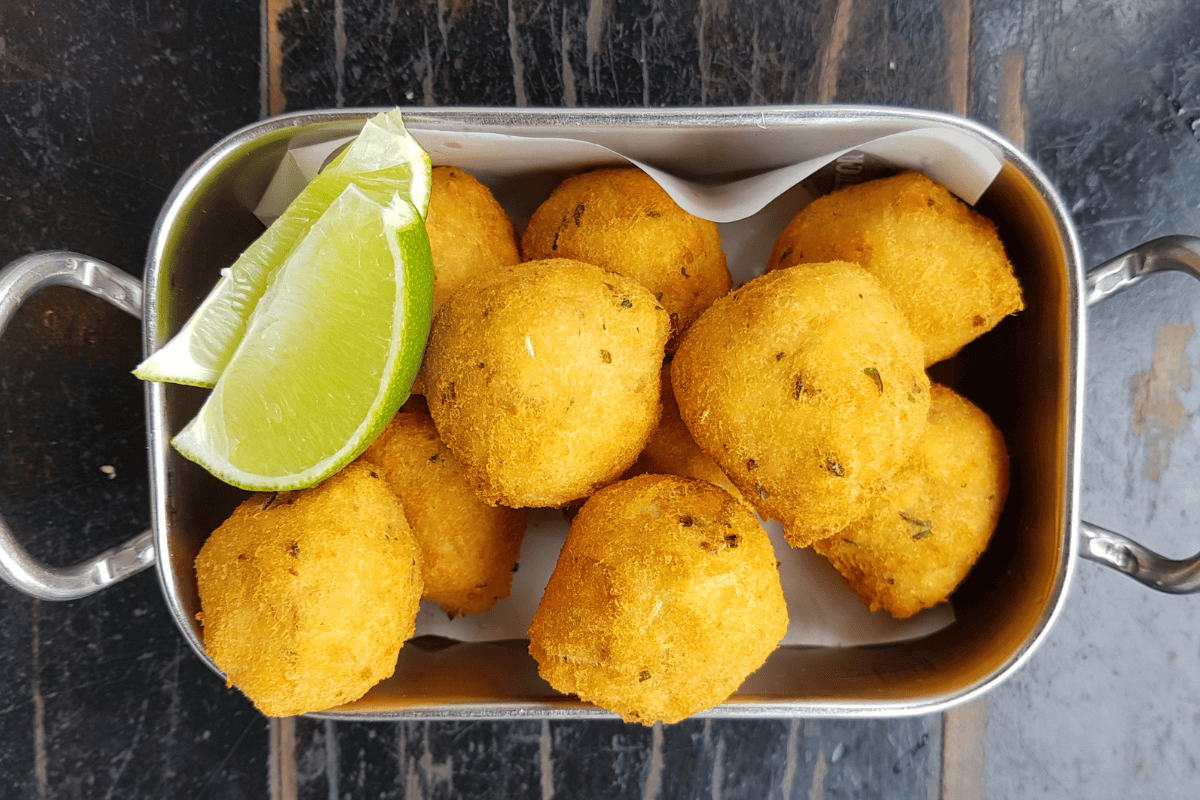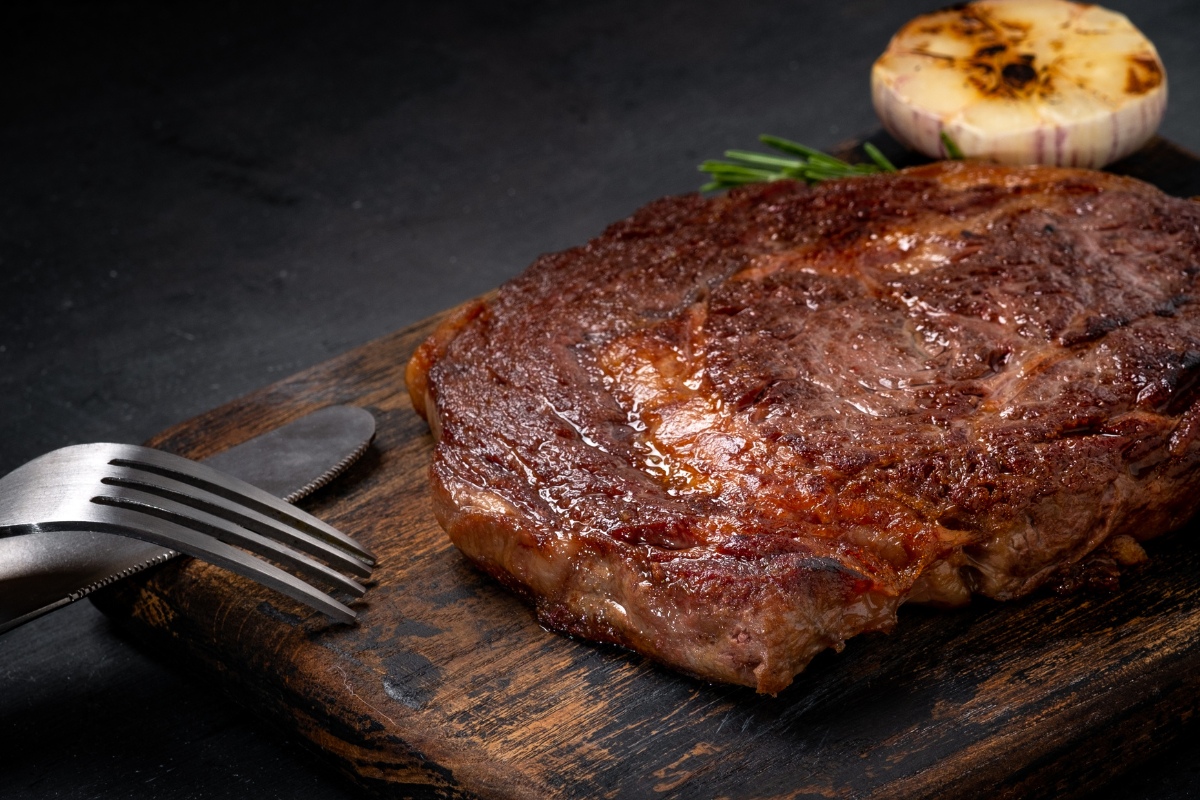Brazilian Kings Cake
The Kings Cake is a traditional dessert associated with Epiphany, also known as Three Kings Day. This is a Catholic observance to commemorate the biblical visitation of Jesus by the Three Wise Men. There are variations around the world, including Brazil, where it is known as bolo rei. It is a simple yet impressive looking cake, with decorations added specifically for their symbolism.
Bolo Rei History
Although the Catholic Church declared Epiphany a holy day in around 325 AD, the first King Cake is thought to have originated in France much later in the 13th or 14th century. Today, there are two primary versions of French bolo rei: the first is an almond frangipane wrapped in crisp puff pastry; the second, which is more popular in Southern France, is an orange-flavored brioche studded with candied fruits.
The bolo rei has since made its way to a large part of the Western Christian world, and it is not limited to Epiphany. In New Orleans, for example, it is heavily associated with Mardi Gras and appears on tables throughout the month of January and up to the day before Lent (Ash Wednesday).
What to Hide in Bolo Rei?
One of the traditions associated with the king cake is a hidden trinket. In most cases, it is a fava bean and/or a small toy. The person who has the slice with the bean must host the celebration the following year. The small toy is for one of the younger guests, who is then crowned “king” for the day.
In the past, the bean and toy were baked into the bolo rei. Today, it is best practice to insert them after the cake is baked to avoid surprise melting or unpleasant tastes. Just frost over the spot where you put them or cover them with the dried fruit.
What is in Bolo Rei?
Bolo rei is more similar to the southern French version. You leaven the cake with yeast and decorate it with candied fruits that are soaked in copious amounts of port wine. Traditional fruits include candied red and green cherries, pineapple rings, and orange peels. Mixed nuts are also added for crunch. The toppings are meant to represent the gifts brought by the Magi to the infant Jesus: the golden crust is for gold, the candied fruit for the sticky myrrh resin, and the spicy aroma to mimic the scent of frankincense.
Do You Have to Use Fruit in Bolo Rei?
Fruit is not everyone’s cup of tea, especially the dried and candied variety. You can omit the fruit entirely or exchange it for orange extract or cognac to get that citrusy flavor. There are also variations that use chocolate in place of the nuts (yum) and dust the topping with shaved chocolate and powdered sugar. Really, you can customize it however you like. Just don’t forget the fava bean and a little toy.
Bolo Roi Recipe
Ingredients:
3 cups all purpose flour
2 tbsp active dry yeast
2/3 cup granulated sugar
2.5 oz butter, softened
3 eggs
½ tsp salt
Zest from one orange
4 oz warm milk
4 oz port wine or brandy
¼ cup mixed candied fruits, chopped ( cherries, apricots, and citrus are good)
1 oz mixed nuts, chopped into small pieces
Whole pieces of dried fruit for the top
Whole nuts, like almonds, walnuts, and pecans, to decorate the top
Confectioner’s sugar
Directions: How to Make Bolo Rei
1: Activate the yeast
- Heat the milk until lukewarm and dissolve a teaspoon of sugar in it.
- Add the yeast to the milk-sugar mixture, stir gently, and set it aside for about 10-15 minutes until it becomes frothy.
2: Prepare the filling and topping
- Soak the chopped candied fruit in a bowl with the port or brandy while you wait for the dough to rise. After 30 minutes, strain the infused fruit and mix in the chopped nuts.
3: Prepare the dough
- In a mixing bowl, combine the flour, sugar, salt, and orange zest.
- Add the activated yeast mixture, 2 eggs, softened butter, and fruit-and-nut mixture to the dry ingredients.
- Knead the mixture until it forms a smooth and elastic dough. Cover the bowl with a cloth and let the dough rise in a warm place for about 1-2 hours, or until it doubles in size.
4: Assemble the Bolo Rei
- Preheat your oven to 180°C (350°F).
- Punch down the risen dough and shape it into a ring, leaving a hole in the center.
- Place the dough ring on a baking sheet lined with parchment paper.
- Brush the surface of the dough with 1 tbsp water mixed with the remaining egg. Arrange the whole candied fruits and nuts mixture on top, pressing them gently into the dough.
- Bake in the preheated oven for approximately 25-30 minutes or until the cake is golden brown.
5: Serve and Enjoy
- Once baked, remove the Bolo Rei from the oven and let it cool on a wire rack. Before serving, dust the cake with powdered sugar for an extra touch of sweetness. Alternatively, you can mix a couple tablespoons of strawberry jam with a little water to make a syrup to provide both sweetness and shine.






